► McLaren 620R tested on road and track
► Limited to 225 cars worldwide, £250k each
► The final, fastest Sports Series model
Driving a GT racing car on slicks is one of the most joyously addictive experiences in the world. But when the flag falls, the cars are loaded back into their transporters and go to sleep until the next test or race weekend.
McLaren’s 620R is different. When the track closes for action, its driver can unbolt its slick tyres, stick on a set of road-legal Pirellis and, without making any other changes, head out of the circuit gates and roar off into the sunset.
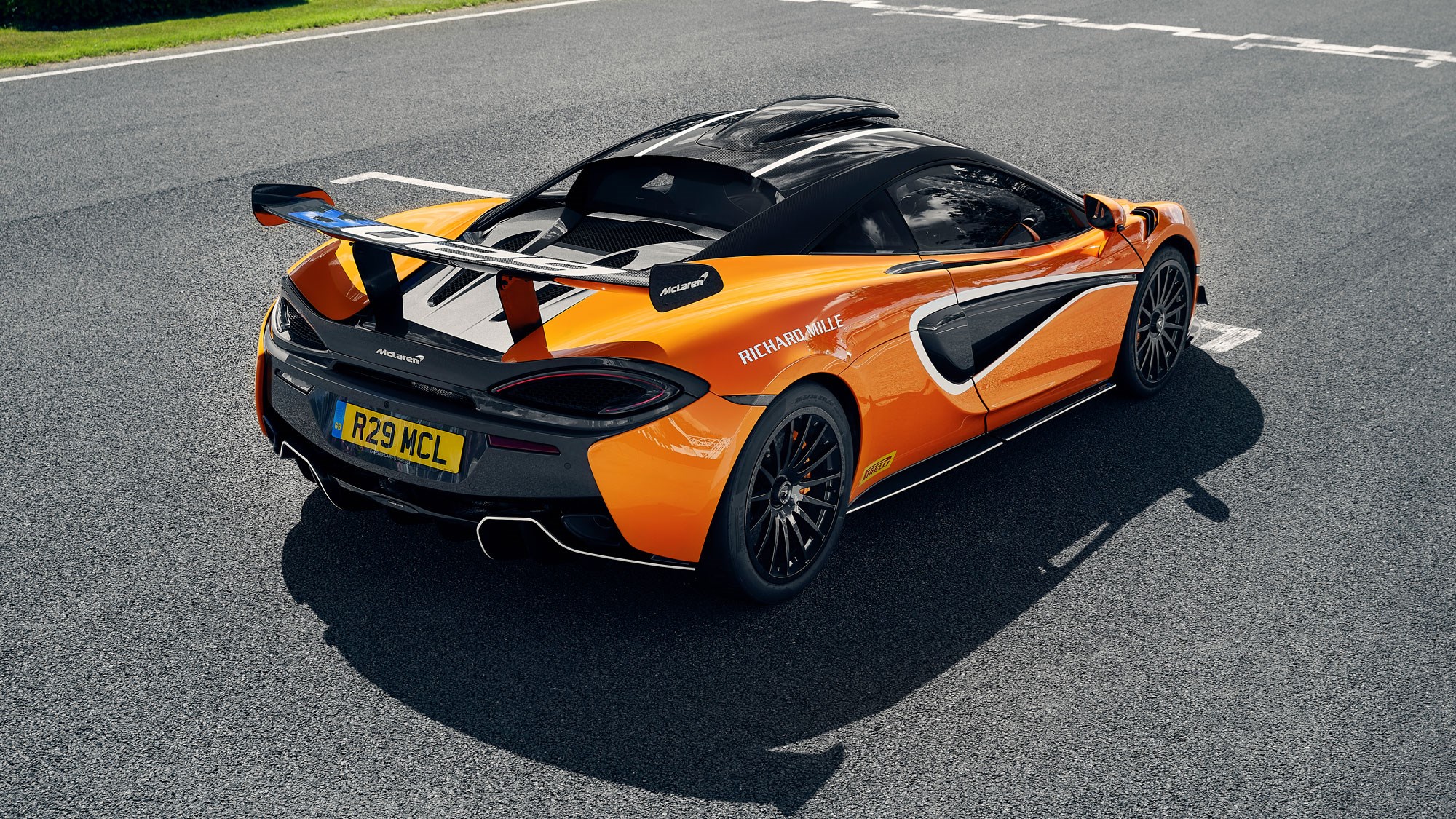
That’s because the 620R is as close as possible to a fully road-legal version of McLaren’s ultra-successful 570 GT4 racing car. Production is limited to 225 cars worldwide.
So this is the roadgoing version of the racing version of a road car?
More or less. The 620R is the final model to be added to McLaren’s current generation of its Sports Series, the company’s entry-level supercar range: 540C, 570S, 570GT and 600LT. A race version, the 570 GT4, competes in international GT racing events and its own one-make Pure McLaren GT series (and it’s good at what it does; only days before we tested the 620R, its GT4 racing counterpart had won the opening round of the British GT Championship).
The 620R is designed to be used on trackdays and private coaching sessions (and for raw thrills on the road when the mood strikes), and it shares more than a bit in common with the 570 GT4.
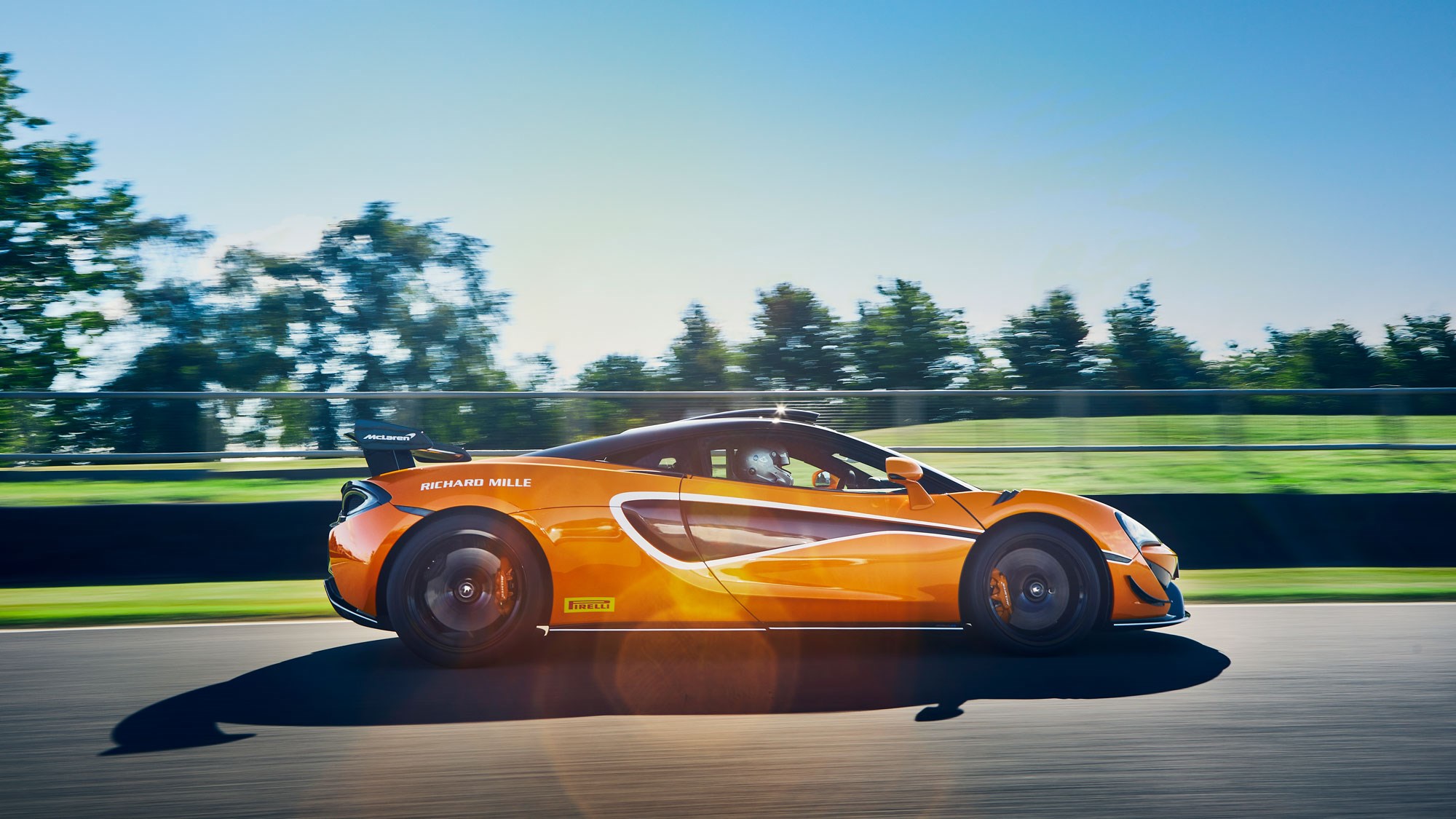
Such as?
As standard, the 620R’s suspension features full-on motorsport-spec dampers, two-way adjustable with 32 settings for bump and rebound opening up plenty of set-up tweakability.
They save around 6kg a corner compared with the Sports Series’ usual adaptive dampers, although those can be specced as an option if you prefer a comfier ride on the road. A nose-lift kit is available to help clear speedbumps but can only be specced with the adaptive dampers. We tested the 620R on the racy dampers (set around 25 per cent softer for the road than on track), and it coped reasonably well with shallow ramps at least, avoiding skimming the front splitter.
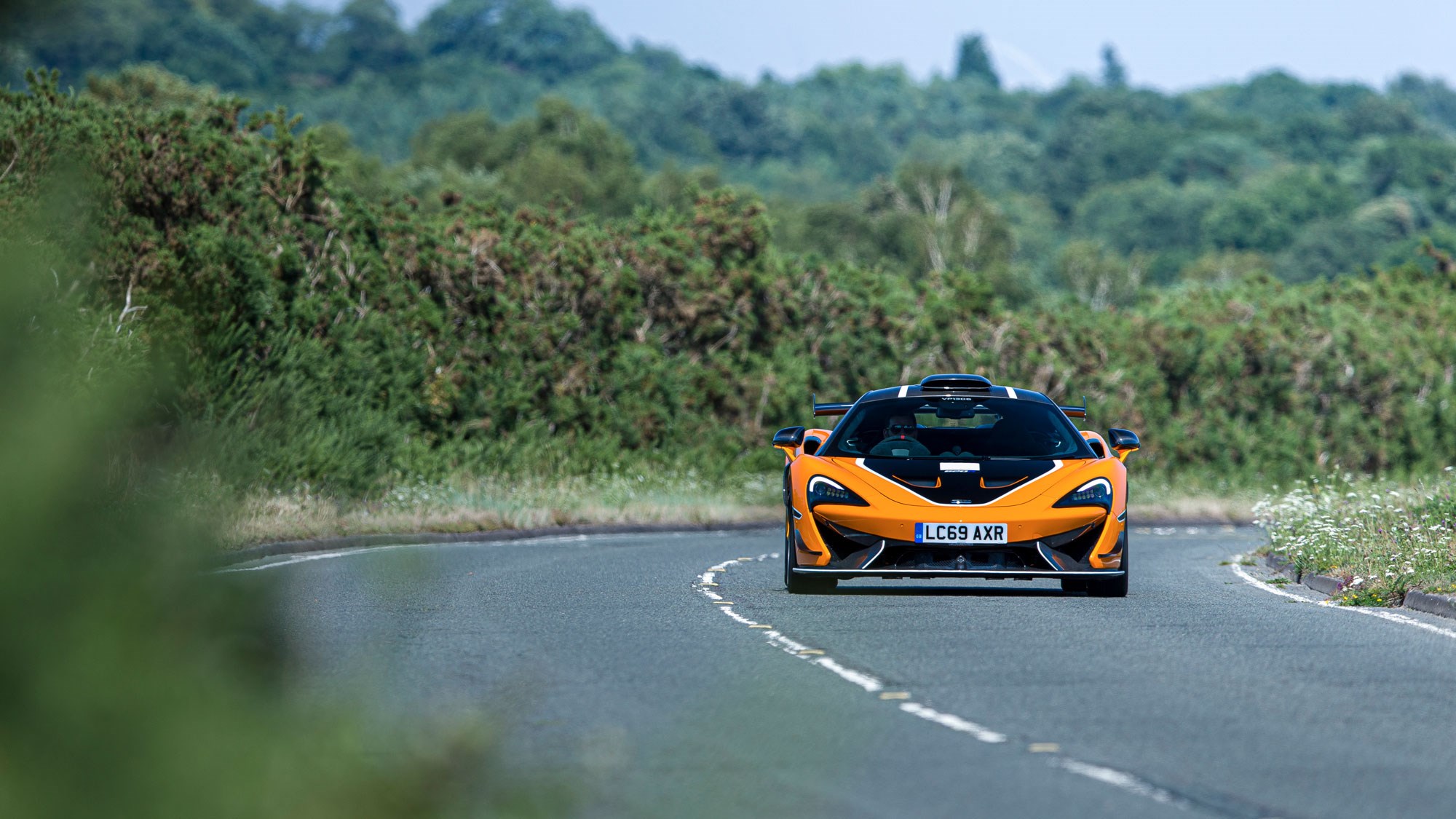
New centre-lock wheels have been designed for the 620R, similar to the GT4’s race rims. Uniquely, slick tyres have been developed by Pirelli especially for the 620R. McLaren wanted customers to be able to fit slicks to drive on track but none such existed for the 20-inch front, 21-inch rear wheels required to drive the car on the road (the race car runs on 18s). Pirelli has developed front and rear slicks that fit both the road-going rims and also fit the road-going geometry setup – so you can drive to the track on the 620R’s standard semi-slick Trofeo road tyres, then swap straight onto the slicks without any other changes required.
An 18bhp power hike over the 600LT via a new ECU makes the 620R the most powerful Sports Series McLaren of them all, with 610bhp or 620 metric horsepower (hence its name). That actually makes it an awful lot more powerful than the 570 GT4, which is restricted to less than 500bhp in race trim to balance its performance against rival GT4 cars.
With the same driver in both cars, McLaren says laptimes are broadly similar between the 620R and 570 GT4: the former is quicker down the straights, the latter grippier in the corners.
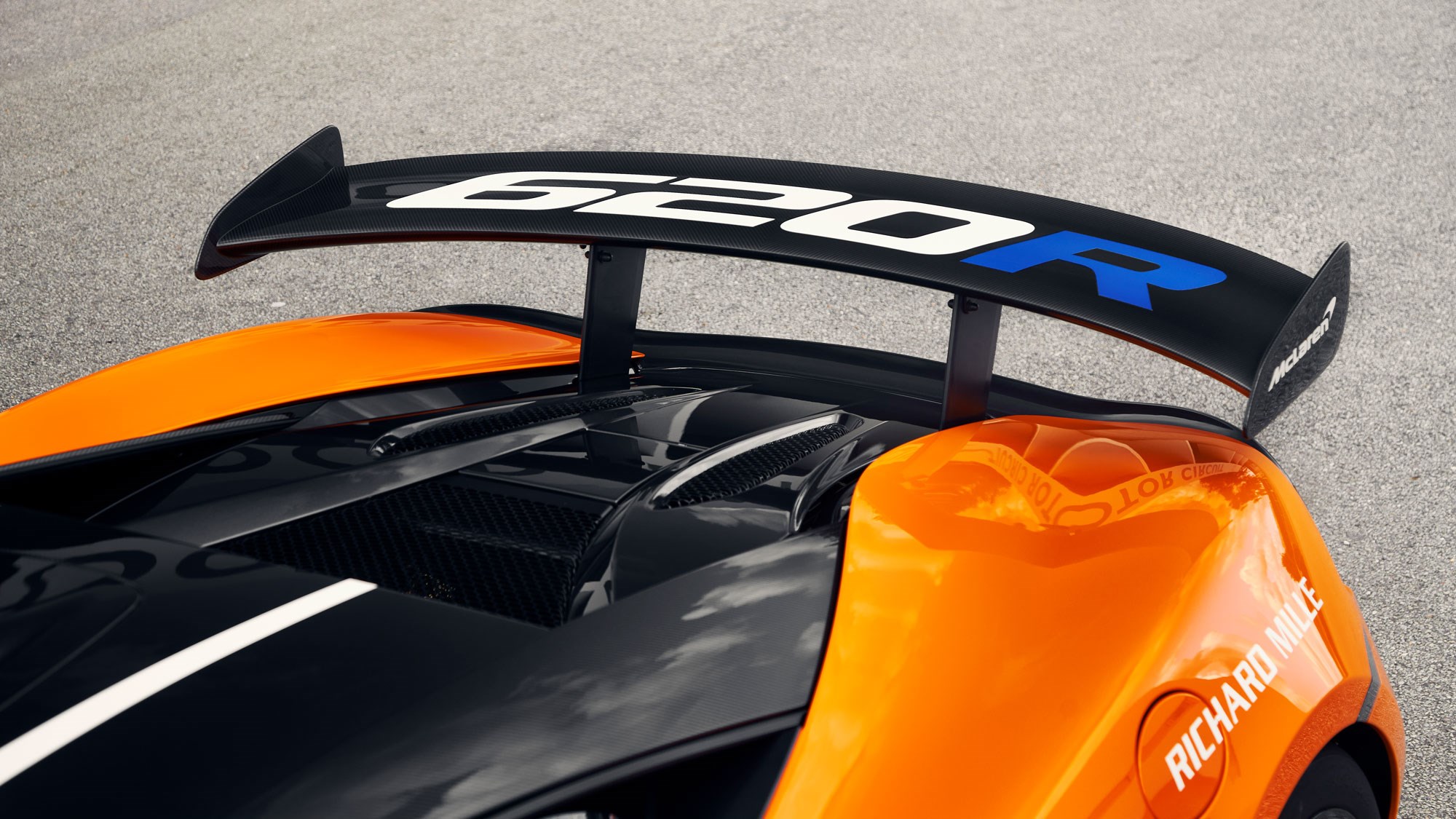
The bodywork looks fairly racy too?
Same rear wing as the GT4 racer, with a brake light now built in and just enough of a radius on the side fences to pass road-going homologation. It’s adjustable to three levels; at its steepest, it develops 185kg of downforce at 150mph. We drove it on the road in its shallowest setting, and on track at Snetterton in its mid setting, increasing downforce by about 20 per cent.
To balance all that downforce at the rear, as much of the GT4 racer’s pointy aero componentry at the front has been retained too. While the 620R’s front splitter isn’t quite as extreme as the racing car’s, it’s not far off and retains the race car’s aero blades. Similar dive planes flank the bespoke front bumper, and the bonnet has been remodelled in carbonfibre with nostrils ducting air in and out to further boost downforce. Despite the new nasal passages, the front boot is still usable, with enough space for a couple of bags or a pair of crash helmets. Altogether, there’s around 65kg of downforce acting on the front axle at 150mph.
The dive planes also help to cool the brakes, which are serious carbon ceramic discs, grabbed by six-piston calipers at the front and four- at the rear.
The sticker kit pictured here is inspired by the racing car, but it’s optional – customers can choose their own liveries, no decals at all, or go to town with McLaren’s MSO customisation arm.
What’s it like inside? Stripped out like a race car?
To an extent, but (as you’d hope of a £250,000 car), it’s also very nicely finished. There are no carpets or glovebox, and there’s plenty of carbonfibre on display but whereas in the race car it’s not been designed to be pretty, the 620R’s carbon surfaces are as attractive as they are functional and there’s plenty of suede trim extending right down to the footwell
Although comfier standard Sports Series seats are available, the 620R comes with the same fixed-back carbon shells as the Senna and 600LT as standard. They have full six-point harnesses for track use but also a regular over-the-shoulder inertia reel seatbelt for road legality (and convenience – it’s less of a faff than plugging a full harness into place for every journey).
Like in the race car, the centre console has been raised to make its switchgear more accessible once you’re pinned in place by the harnesses, and there are fabric door-pull straps wrapped around the interior door handles, to make it easier to pull the doors shut when you’re harnessed up.
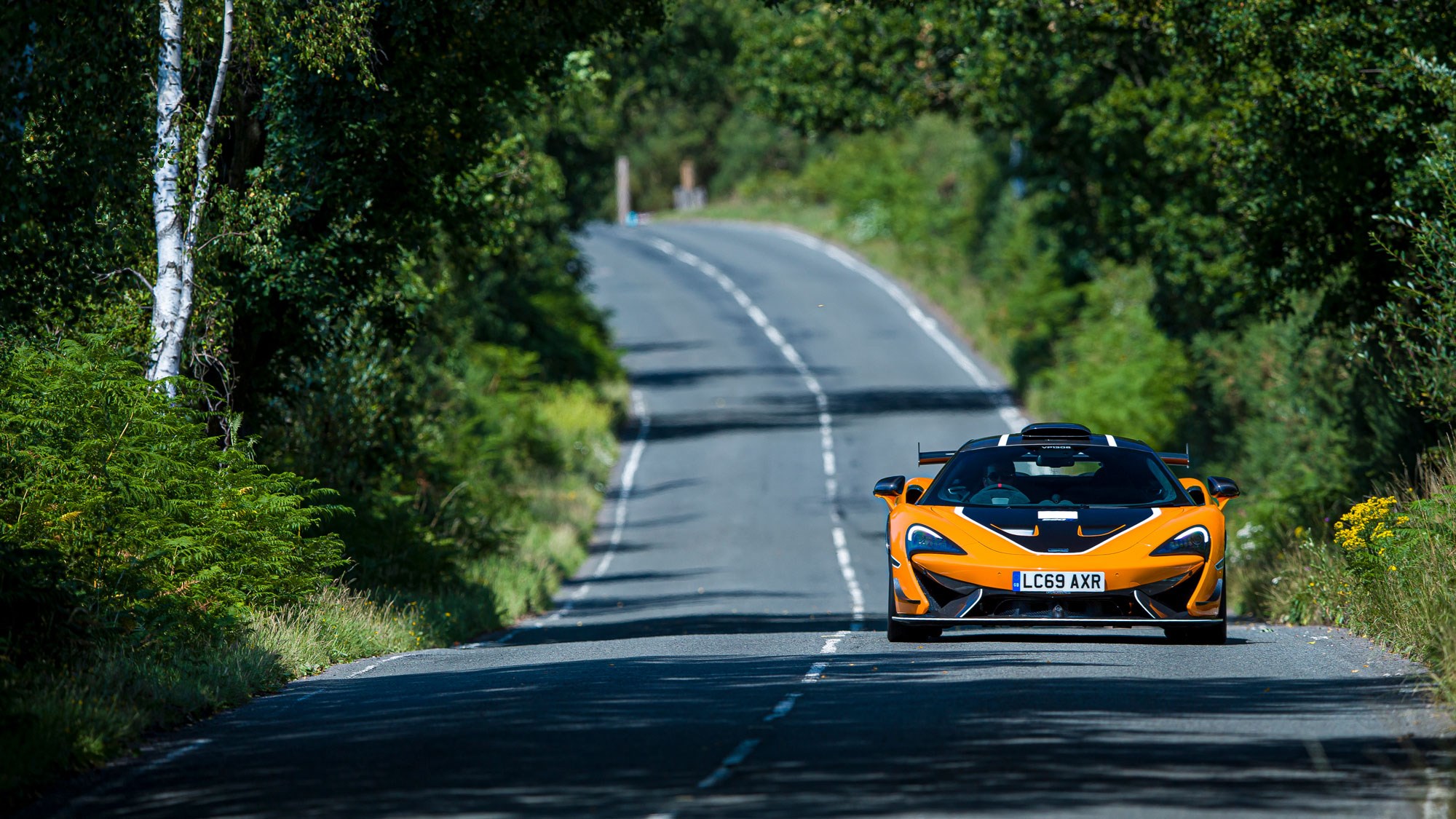
How does the 620R feel on the road?
In a word, uncompromising. The ride on the motorsport dampers really is extremely firm, and you can feel every painted surface on the road thumping through the chassis. But it’s not intolerable; after all this is a car that’s unashamedly positioned as a hardcore machine, and you’d never expect it to ride as smoothly as a 570S.
It’s loud, too. You hear the twin-turbo V8 go about its business in detail. On throttle you can hear the (optional) roof scoop sucking in air, and off-throttle the turbos gasping, like a swimmer surfacing for air. You feel it a little too; at certain revs there’s a resonant vibration through the interior trim and if you’ve stowed your phone and keys in the useful carbon cubby between the seats they’ll dance a little jig.
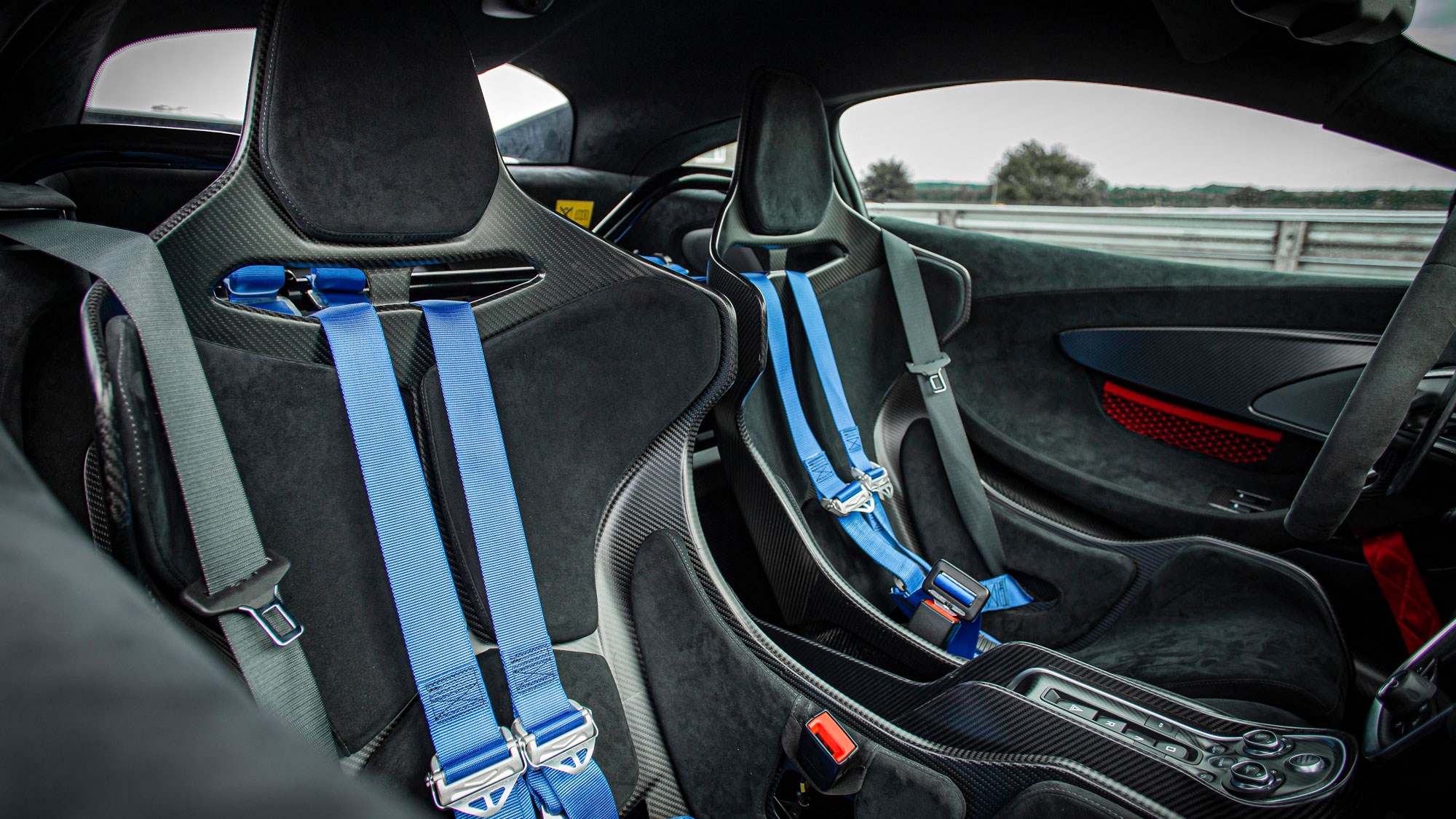
Again, it’s not unbearable – a stereo is available as an option, and you can hear it well enough at motorway speeds. There’s cruise control too, and sat-nav is a no-cost option (on the touchscreen which is calibrated to work while you’re wearing race gloves).
There’s the constant slightly illicit thrill that you’re driving a car that’s road-legal, but feels like it shouldn’t be, as if you’ve snuck onto the road in a racing car with tradeplates. McLaren’s engineers have worked hard to ensure that despite its racy suspension setup the 570S’s standout steering feel has been retained – this is one of the absolute benchmark cars for steering response and feedback, and despite the track-focused nature of the suspension it doesn’t pull about over cambers or feel unruly – just accurate. There’s no slack, with instant response either side of the straight ahead.
Cranking through the 620R’s drive modes no longer alter the fixed suspension’s firmness but does gradually relax the stability control and quickens the gearshift times. In Sport mode, the musket-like exhaust crack triggered by the instant ignition cut and unburnt fuel sounds more intense than ever, due to the reduced sound deadening.
Traffic is framed in the rear window between the rear wing and the extended bulkhead that forms a partial rollover structure. It disappears pretty instantly if you find space to extend the throttle pedal, even by a small amount of its travel.
The Norfolk roads around the Snetterton circuit – flat, heavily trafficked, uninspiring – don’t really offer the best opportunity to explore the 620R’s performance but it still feels an immersive machine to drive – instant response, raw soundtrack and lightning performance – yet with (relatively) urbane manners for such a serious bit of kit.
And on track?
Snetterton circuit is A) an old airfield, and B) in Norfolk, which makes it very flat. It’s a good test of a car because it has a mix of high-speed, delicate stuff and big-braking, slow-speed, direction change stuff, and some sections that are a bit of both. Two socking great straights mean it’s also one of the fastest circuits in Britain but being wide, relatively featureless and mostly pancake-like in topography, it doesn’t feel it in most cars. All that space means you don’t necessarily feel like you’re going as quickly as you really are.
Yet the McLaren 620R feels really blooming quick here. Not just in a straight line, either (although 0-124mph in 8.1 seconds is a pretty good party trick); when you get to a corner, you can leave your braking last-gasp late and turn in at speeds that would see you sailing straight on in most cars.
Yet, to its credit, it doesn’t feel intimidating. McLaren’s brief was to make drivers of all experience levels feel at ease in the car quickly, and that’s certainly the case.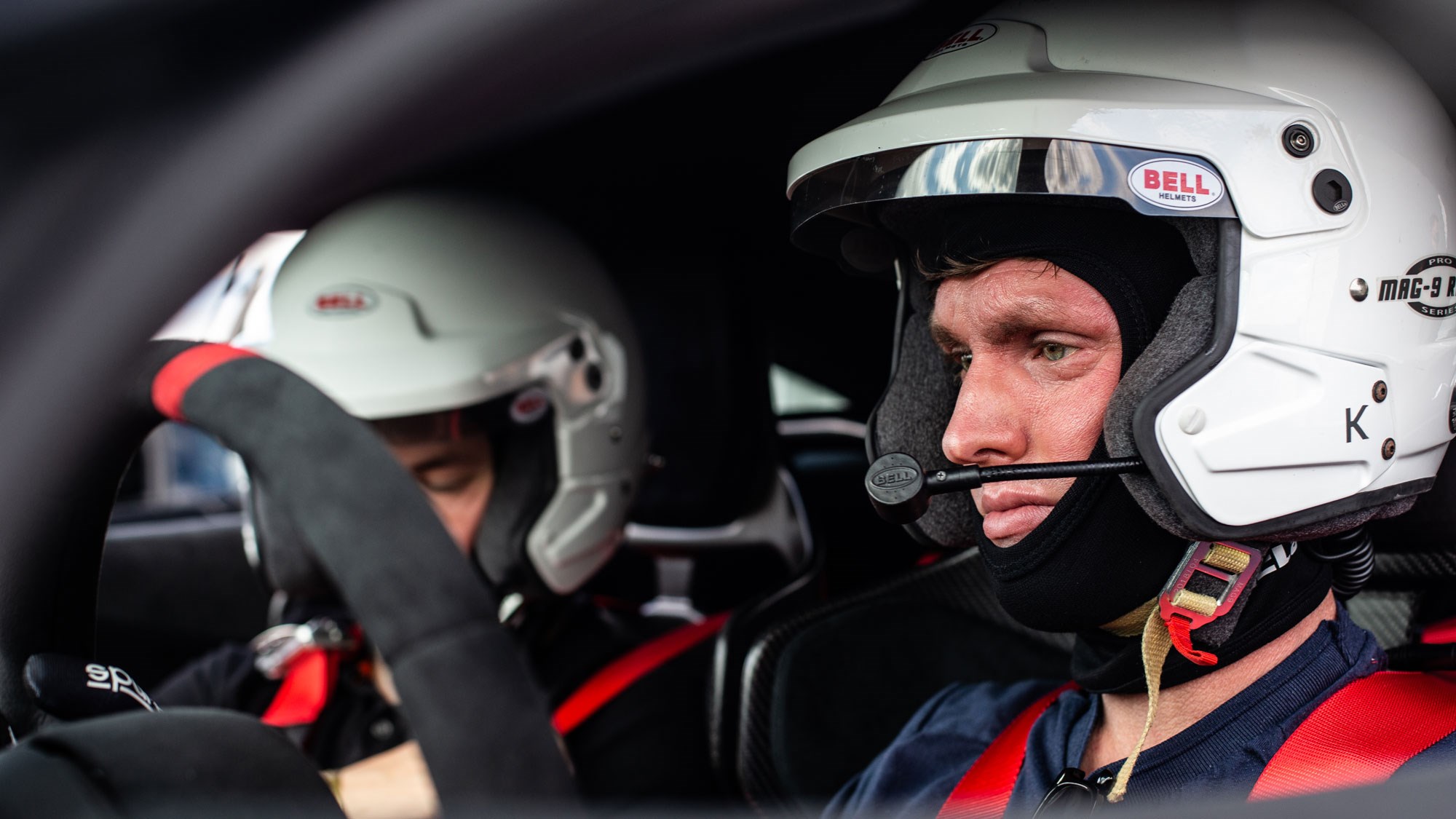
The handling balance is very much towards understeer, with bags of traction. The rear end is nailed down and you’re more likely to push the front than lose the back (although more oversteer can be trimmed in with set-up tweaks, of course.) I somehow found myself racing a 570 GT4 at Silverstone on one of the luckier days of my life in a feature for CAR’s January 2019 issue, and the 620R really does feel very similar. Just like its multi-title winning cousin, it’s got your back: consistent responses, every corner, every lap, helped by the stiff platform of the carbon monocoque. Brake feel is faithful too, thanks partly to the same vacuum pump as the McLaren Senna, which works to maintain pedal travel as temperatures climb.
The 620R’s slicks are not as outright grippy as the GT4’s racing tyres but they last longer, and are less spiky on the limit. Towards the end of our 20-minute session (with a break to reset the tyre pressures), they did begin to overheat and I experienced a big twitch of lift-off oversteer at the high-speed right-hander that is Snetterton’s Turn One, but otherwise the 620R is incredibly grippy and friendly at the limit.
Snetterton’s tricky final set of corners are a good test of a car: they demand you somehow brake, downshift and turn all at the same time. The 620R aces it, letting you know exactly what it’s up to and giving you plenty of feedback and warning as to how much you’re asking of it before it gives up its considerable grip. It’s a friendly car.

Verdict
The 620R is in some ways a car that’s quite unique in its field. To find something equally capable on track and raw on the road, you’d be looking at rarefied cars such as the Radical RXC rather than a Porsche 911 GT2 RS or Ferrari 488 Pista.
It’s the last model planned in McLaren’s current-generation Sports Series and shows the car’s full dynamic potential. It fulfils the ‘race car for the road’ brief about as far as it possibly can, while retaining a liveable, nicely finished interior and tolerable driving manners on the highway.
The McLaren 600LT is actually the more fun, more playful car; the 620R is more serious, set up more for fast, accurate lapping than playful oversteer. It’s aimed at customers who want to further their driving skills on high-end trackdays and have a driver coach among their most-dialled contacts, in a car that’s built to lap hard all day in a way that a regular supercar couldn’t.
I’d be tempted to buy the 570 GT4 race car, which actually costs around £58k less – but then again, you might need to budget another £200k to race it.
Being able to drive it on the road is a special bonus. Even if, most of the time, it feels a little too extreme, a little too hardcore for most scenarios – on the right road, at the right time, what an experience.